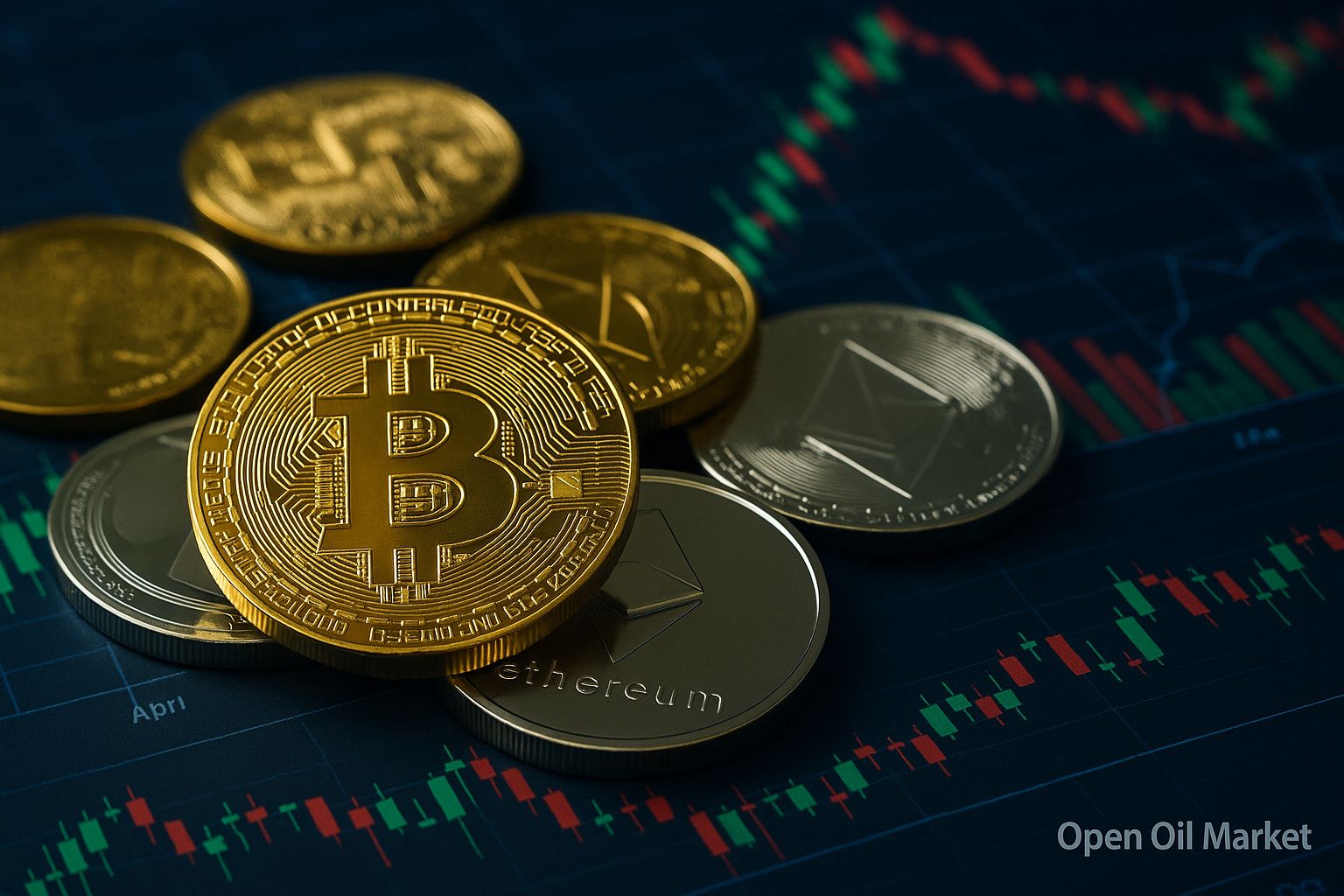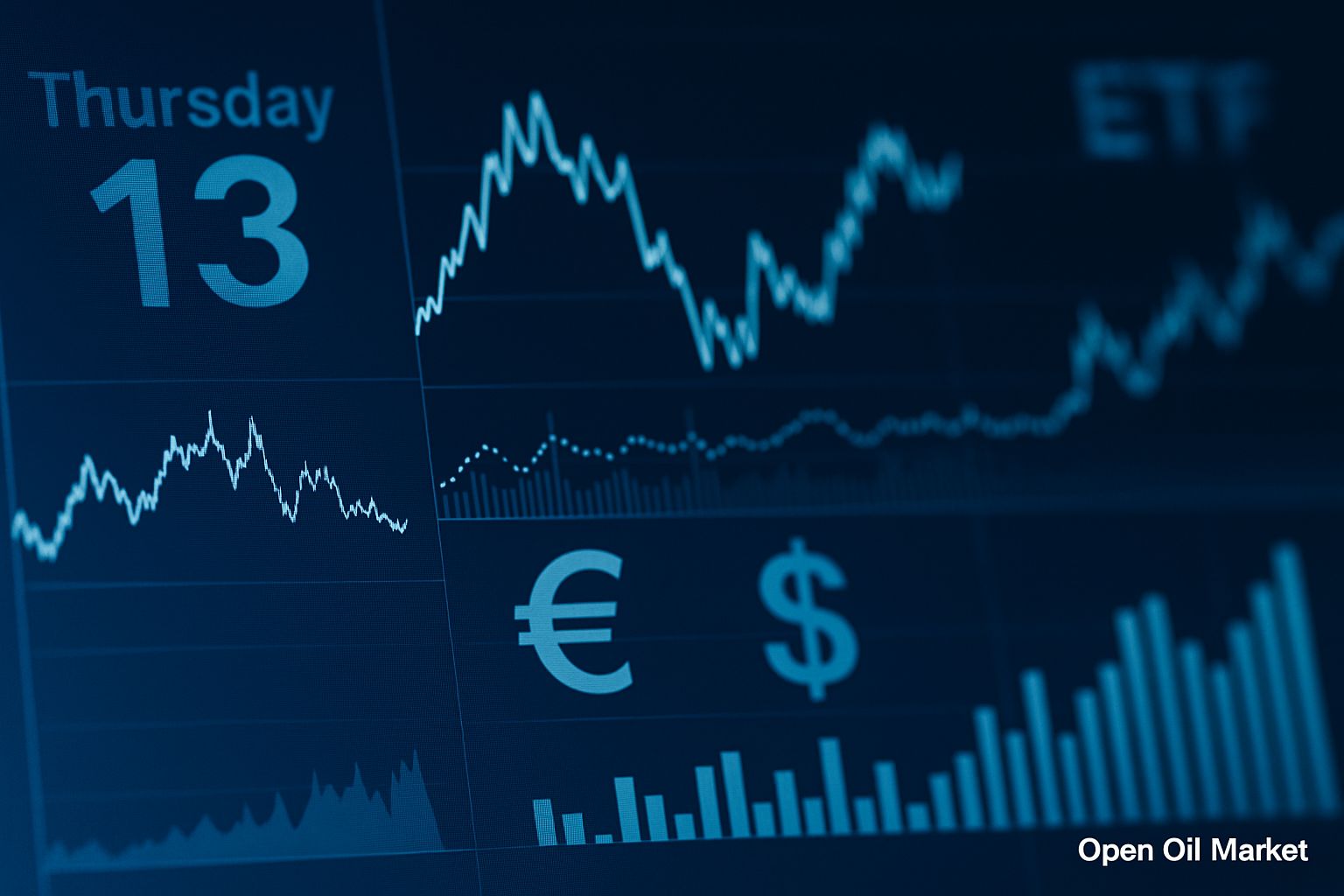
Global Cryptocurrency News as of November 9, 2025: Bitcoin Holds Above $100,000, Ethereum Regains Ground, Altcoins Show Mixed Dynamics, Institutional Interest Grows, and the Market Prepares for a New Growth Phase.
By the end of the first week of November, the cryptocurrency market is showing signs of stabilization after a recent downturn. Bitcoin maintains its position above the psychological threshold of $100,000, while leading altcoins are gradually regaining lost ground. Investors are holding a cautious optimism in light of expectations for a forthcoming easing of monetary policy and positive news, such as the anticipated major Ethereum network upgrade. At the same time, institutional interest in digital assets is on the rise, bolstered by an improving regulatory environment.
Bitcoin: Stabilization Above $100,000
The largest cryptocurrency, Bitcoin (BTC), reached a new all-time high in October (about $125,000 at the start of the month) before undergoing a anticipated correction. In the early days of November, amid sell-offs, BTC briefly dipped below $100,000 (its first such drop since June), but soon found support and bounced back above this level. Currently, Bitcoin is consolidating in the range of around $105,000, which is approximately 15% below its record peak. The $99–100,000 area acts as an important support zone, confirming the maintenance of the long-term upward trend. The nearest significant resistance is around $115–120,000: a rise above these levels would pave the way for BTC to reach new highs.
The factors that drove Bitcoin's rally in 2025 continue to support the market. Investors are anticipating a gradual easing of monetary policy in the U.S.—it is expected that in the coming months the Federal Reserve will lower interest rates for the first time in several years. This traditionally increases demand for riskier assets, including cryptocurrencies. Institutional players continue to ramp up their investments in BTC through exchange-traded funds (ETFs) and other products, strengthening the market. However, risks remain: a sudden spike in inflation or tough statements from regulators could temporarily dampen interest in digital assets. For instance, at the end of October, the tightening rhetoric from the Fed triggered a wave of profit-taking and a short-term outflow of funds from crypto funds, but buyers quickly re-entered the market in response to Bitcoin's decline, demonstrating the market's resilience. Overall, BTC is exhibiting relative stability: long-term holders are not rushing to sell, and major companies are purchasing coins on corrections, forming a solid foundation for further growth.
Ethereum: Recovery Ahead of Upgrade
The leading altcoin, Ethereum (ETH), strengthened significantly in 2025, although it also experienced a correction alongside the entire market. At the beginning of November, the ETH price fell nearly 20%, briefly dropping below $3,100 (a three-month low). However, Ether bounced back and recovered to around $3,400–3,500. Despite the recent volatility, Ethereum's current price remains significantly above early-year levels and is approximately 20–25% below its all-time high (~$4,867, reached in 2021). The market capitalization of ETH now exceeds $500 billion (about 12% of the total cryptocurrency market capitalization).
Ethereum's support stems from both fundamental factors and expectations for upcoming developments. By the end of the year, the industry is hoping for the approval of the first spot ETF for Ethereum in the U.S., which would significantly broaden access for institutional investors to this asset and may trigger a new price surge. Additionally, a significant upgrade of the Ethereum network is scheduled for early December, aimed at increasing scalability and reducing fees. This technological factor is capturing the market's attention: participants expect that the network upgrade will strengthen Ethereum's position as a key platform for decentralized applications (DeFi, NFTs, etc.). Structural changes, such as Ethereum's transition to the Proof-of-Stake algorithm and a deflationary emission model, have reduced the supply of ETH, supporting its long-term price growth. Many analysts believe that under favorable circumstances, Ethereum could approach its peak values in the coming months.
Altcoins: Mixed Dynamics
Following Bitcoin's impressive rise in the autumn, investor interest has partially shifted toward other cryptocurrencies. The broader altcoin market also showed growth, but volatility in this segment has noticeably increased. At the end of October and early November, many altcoins retraced from recent highs, resulting in a mixed current dynamic. While some leading digital assets are holding near multi-year peaks, others have declined more significantly. For example, XRP (the token of the Ripple company) surpassed $3 for the first time since 2018, buoyed by Ripple's legal victory over the SEC, and is currently holding around this mark thanks to expectations surrounding the launch of an XRP ETF. Binance Coin (BNB) reached approximately $850 during the height of the autumn rally; it is now trading around $750 and remains in the top five despite ongoing regulatory pressure on the Binance exchange.
The Solana (SOL) platform has been trending upward this autumn, with its price solidifying around $170, driven by the expansion of projects within the Solana ecosystem. Conversely, some previously rapidly rising coins have significantly declined from their peaks: Cardano (ADA) has retraced to around $0.75 after its summer surge, and the popular meme token Dogecoin (DOGE) is trading around $0.20, having lost some ground following hype. Nevertheless, interest in alternative cryptocurrencies remains, particularly for projects with strong technological bases or positive news backgrounds. Investors are keeping an eye on plans for the launch of ETFs for certain altcoins—such as Solana, Cardano, and XRP—reflecting a belief in further integration of these assets into traditional financial markets.
Market Sentiments and Volatility
At the beginning of November, the cryptocurrency market experienced sharp price fluctuations and shifts in investor sentiment. The "fear and greed" index dropped to approximately 20–25 points, indicating a zone of "extreme fear"—a stark contrast to the readings from a month earlier. This reflects heightened caution among participants following the price drop; at the same time, extreme fear is often viewed by some investors as a signal to buy at the "bottom" before a market turnaround.
The sharp decline in prices was accompanied by a mass liquidation of margin positions, intensifying the depth of the downturn. In a 24-hour period from November 4-5, the total volume of liquidated trades on cryptocurrency exchanges exceeded $1.7 billion, with about 76% of this amount attributed to the liquidation of long positions. Traders in Ethereum, in particular, faced significant losses from liquidations of over $570 million in a single day. These episodes underscore the high risks associated with using large leverage: a wave of closed positions exacerbates short-term price fluctuations. At the same time, the price declines have already brought several indicators into oversold territory, and a reduced proportion of leveraged positions may contribute to stabilization. If Bitcoin can hold above approximately $100,000, and Ethereum above around $3,100, the market has a chance to transition to a recovery phase soon and recover some of the recent losses.
Institutional Interest at Record Levels
One of the key trends in 2025 has been the unprecedented participation of institutional investors in the cryptocurrency market. Large banks, investment funds, and public companies across the globe are actively incorporating cryptocurrencies into their portfolios, ensuring record capital inflows into the sector. The emergence of the first spot ETFs for Bitcoin and Ethereum in the U.S. has simplified access to digital assets, and demand for these instruments is rapidly growing. Since the beginning of the year, the total assets under management for crypto ETFs have increased to around $150 billion. At the end of October, there was a brief profit-taking spree—over the last week of the month, more than $1 billion was withdrawn from American Bitcoin and Ethereum ETFs combined. However, by early November, institutions resumed buying on dips, quickly offsetting this outflow. Currently, aggregate institutional investments in cryptocurrencies are approaching historical highs, and the share of Bitcoin and Ethereum in the reserves of some corporations continues to grow. Many companies view BTC as a strategic reserve asset alongside gold. This influx of capital from "above" is creating a solid foundation for the market and fueling expectations of a prolonged bullish trend.
Regulation: U.S. and Europe
The regulatory environment surrounding cryptocurrencies is gradually improving, instilling confidence among investors. In the U.S., a shift in approach regarding the digital asset industry is becoming apparent in 2025. Congress is advancing bills (such as the Digital Asset Market Clarity Act) aimed at establishing clear rules for cryptocurrency exchanges and token issuers. Concurrently, the new leadership of the Securities and Exchange Commission (SEC) has softened its stance: the regulator has stated that only a small fraction of tokens need to be regulated as securities and is preparing clear criteria for classifying digital assets. The SEC has already withdrawn several lawsuits against major cryptocurrency exchanges, signaling its readiness to work with the industry rather than against it. Furthermore, the administration of President Donald Trump pardoned Binance exchange founder Changpeng Zhao (CZ), previously convicted for financial law violations—a groundbreaking move that illustrates the authorities' willingness to compromise with the crypto business. Collectively, these measures are creating a more favorable environment for the cryptocurrency market in the U.S., promising legal clarity and improved investor protection.
In Europe, a unified law on crypto assets, Markets in Crypto-Assets (MiCA), is set to come into effect by the end of the year, establishing common rules for the industry across EU countries (covering the activities of cryptocurrency exchanges, wallets, stablecoin issuance, etc.). Several major crypto companies have already obtained licenses under the new rules, creating more predictable business conditions and a balance between innovation and security. European regulators continue to engage in dialogue with the industry, striving to make regulation flexible and responsive to market developments.
Global Trends and Initiatives
- China (via Hong Kong) — Hong Kong is preparing to launch its first regulated stablecoins linked to the yuan with the support of Chinese authorities. This pilot project aims to lay the groundwork for the use of digital currencies in international transactions under the oversight of Chinese regulators.
- Brazil — Interest among governments in Latin America regarding crypto assets is growing. In Brazil, parliament is considering an initiative to include Bitcoin in national foreign currency reserves (up to 5%). Such a decision could make Brazil one of the first major economies to officialize cryptocurrency as part of state reserves.
- UAE and Singapore — Countries in the Middle East and Southeast Asia are striving to become global crypto hubs. The United Arab Emirates is attracting blockchain businesses with progressive regulations and special economic zones for crypto companies. Singapore is also implementing friendly regulations and licensing cryptocurrency exchanges, transforming into one of the centers of global crypto finance.
- Russia — Russian regulators are tightening control over cryptocurrency transactions within the country. Banks are implementing systems to track and block suspicious operations with digital assets, and measures against illegal crypto transactions are becoming more stringent. At the same time, Russia is promoting its own digital national currency project: a prototype of the digital ruble has already been tested, with an official launch expected in 2026. These steps aim to ensure financial security and legality of transactions, integrating cryptocurrencies into the existing banking system.
Top 10 Most Popular Cryptocurrencies
- Bitcoin (BTC) — ~$105,000 (≈55% of the market). The first and largest cryptocurrency with a capped supply (21 million coins). Despite recent volatility, BTC maintains key price levels. Institutional demand and Bitcoin's reputation as "digital gold" support its long-term growth.
- Ethereum (ETH) — ~$3,500 (≈12% of the market). The leading smart contract platform and the second-largest cryptocurrency by market capitalization. The transition to Proof-of-Stake and a deflationary emission model have strengthened Ethereum's position as a technological asset. The anticipated network upgrade and potential ETF launches are increasing investor interest in ETH.
- Tether (USDT) — ~$1.00. The largest stablecoin pegged to the US dollar (1:1 exchange rate). USDT provides high liquidity in the crypto market, serving as a "safe haven" for capital between trades. The market capitalization of the coin is around $160 billion, and it consistently maintains its parity with the dollar.
- Binance Coin (BNB) — ~$750. The token of the largest cryptocurrency exchange, Binance (BNB Chain). It is used for paying trading fees, participating in new projects on the platform, and other exchange services. Despite regulatory complexities surrounding Binance, BNB remains in the top five due to its wide applicability and community support.
- USD Coin (USDC) — ~$1.00. The second-largest stablecoin (issued by the Circle and Coinbase consortium). Fully backed by dollar reserves and regularly audited, USDC is considered one of the most reliable digital assets. It is actively used by institutional investors and in the DeFi sector.
- XRP (Ripple) — ~$3.00. The token of the Ripple payment network for rapid cross-border transactions. In 2025, XRP surpassed $3 for the first time in 7 years, aided by Ripple's legal victory over the SEC and expectations surrounding the launch of an XRP ETF. This asset attracts banks and funds due to the efficiency of Ripple's technology and has reentered the top three by market capitalization.
- Solana (SOL) — ~$170. A high-performance layer one blockchain known for its fast transaction speeds and low fees. SOL has surged due to the expansion of its ecosystem (decentralized finance, NFTs) and prospects for launching an ETF based on Solana. Despite general market fluctuations, Solana is holding close to its recent highs.
- Cardano (ADA) — ~$0.75. A blockchain platform that employs a Proof-of-Stake algorithm, focusing on a scientific approach to development. While ADA's price is far from its record highs, the coin remains among the top ten due to its significant market capitalization and active community. Investors believe in Cardano's long-term potential, given plans for an ETF launch and network upgrades.
- Dogecoin (DOGE) — ~$0.20. The most well-known "meme" cryptocurrency initially created as a joke. DOGE retains its position among the largest coins due to its dedicated community and periodic surges in popularity (e.g., following public mentions by notable entrepreneurs). The coin is used for microtransactions and tips online but remains extremely volatile.
- TRON (TRX) — ~$0.33. The token of the Tron platform, focused on decentralized services, multimedia applications, and the issuance of tokenized assets. Tron attracts users with low fees and high throughput. TRX has strengthened its position and entered the top ten largely due to the active use of the network for issuing stablecoins and the growth of DeFi applications.
Thus, as of November 9, 2025, the cryptocurrency market overall remains at historically high levels, despite the volatility experienced. Fundamental factors remain positive: the influx of institutional capital, technological advancements in blockchain platforms, and regulatory easing are creating favorable conditions for further industry growth. However, a degree of uncertainty persists, prompting market participants to closely monitor key events—such as the possible approval of new crypto ETFs, the successful implementation of the Ethereum upgrade, as well as macroeconomic signals (the dollar exchange rate, central bank policies). These factors could provide new momentum for the market towards the end of the year. For now, investors are balancing between caution and hope. Many are counting on Bitcoin and Ethereum maintaining key support levels to allow the market to resume growth. However, they are acting prudently given the recent volatility. As mid-November approaches, the crypto industry holds its positions and prepares for new movements, presenting investors with both risks and opportunities.




